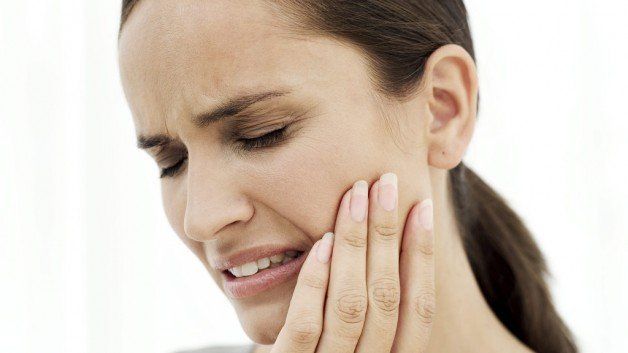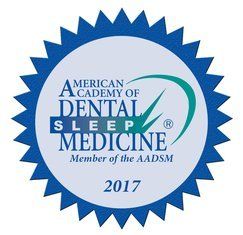Trigger Point Injections for TMD and Orofacial Pain
For millions of people, orofacial pain, neuropathic pain, and pain caused by TMD (temporomandibular joint disorders) can be debilitating, resulting in thousands of dollars in medical treatment and hundreds of hours of lost productivity. Trigger point injections provide a non-surgical, opioid-free option for treating orofacial and neuropathic pain caused by TMD.
Dr. Kathrine S. Phillips of Restore TMJ & Sleep Therapy is board-certified in orofacial pain, specializing in treating the pain associated with TMD and orofacial and neuropathic disorders. As part of her commitment to remain at the forefront of cutting-edge therapies designed to help patients realize the best outcomes possible, Restore TMJ & Sleep Therapy is proud to offer trigger point injections to treat TMD and other orofacial conditions.

Give us a call today to schedule your consultation
The Origins of Orofacial Pain and Trigger Points
Factors like stress, arthritis, and injury can cause overstimulation and stiffening of the muscles, pulling joints out of alignment. When this happens in the muscles of mastication—the large chewing bones in the jaw and side of the face—it can cause strain and misalignment of the TMJ, leading to symptoms like
- Muscle spasms
- Pain
- Difficulty opening and closing the mouth
- Noises in the jaw, like popping or clicking
- Pain in the mouth, teeth, jaw, head, neck, shoulders, and ears
Trigger points are sensitive areas of tight, hyper-tense muscle fibers that can develop as a result of tension, overuse, or stress, as well as from habits like nail biting or clenching and grinding (bruxism).
Trigger points can cause strain in a specific location as well as referred pain throughout the muscle or even other parts of the body. Trigger points are common in the muscles associated with the TMJ, including the temporalis and the masseter.
Most causes of orofacial pain originate from trigger points in the muscles and fascia surrounding the TMJ. These myofascial trigger points can often be linked to headaches; back, neck, and shoulder pain; jaw pain; ear pain, ringing and fullness; and general muscle pain.
Trigger points and the pain that accompanies them can be both contributing factors and co-existing symptoms of TMJ disorders, or TMD. The causes of orofacial and neuropathic pain are multifactorial, so it can be difficult to determine what is the source and what is the symptom. However, for many people, treating trigger points also helps alleviate the pain and symptoms of their TMJ condition.
Trigger Point Injections
Trigger point injections can be used to relieve the pain of trigger points caused by TMD, orofacial pain, and neuropathic pain and reduce inflammation. By mechanically disrupting the tension of the trigger point and modifying the transmission of pain fibers, trigger point therapy can deactivate the trigger point and reduce the overall pain level.
At Restore TMJ & Sleep Therapy, trigger point injections can be used to administer an anesthetic, steroid, or numbing agent like 1% lidocaine or mepivacaine to temporarily numb the site of the trigger point and reduce the sensation of referred pain. Although the numbness lasts only a few hours, it's often enough to produce therapeutic benefits and pain relief that last days or even months.
Trigger point injections are effective in relieving:
- Chronic headaches and TMJ pain
- Myofascial pain
- Pain in the neck, shoulders, and upper and lower parts of the back
- Pain in the jaw muscles, including the masseter and temporalis muscles
Trigger point injections can also be used on occasion to administer therapeutic Botox for more aggressive treatment of TMD.
Trigger point injections are a simple, in-office procedure that can be effective in treating TMD where other treatments have either failed or have been insufficient in treating the type and severity of pain. They can also be used to complement other therapies for long-lasting relief and can help increase the efficacy of treatments like night guards and dental appliances.
Treat Your TMD and Orofacial Pain with Trigger Point Injections from Restore TMJ & Sleep Therapy
As an effective and minimally invasive treatment option, trigger point injections fall squarely under the expertise of the specialists at Restore TMJ & Sleep Therapy. Dr. Phillips has a unique understanding of the physiology of the soft tissues, muscles, and bony areas of the facial structure, as well as extensive experience in performing injections in the mouth and face. She also has training across the entire spectrum of orofacial and dental conditions and access to a broad network of trusted healthcare providers, enabling them to develop and direct the comprehensive, personalized treatment plan you need for optimal results.
You don't have to live in pain. If you are suffering from symptoms of trigger points or TMD, schedule a consultation today with Dr. Phillips.
Trigger Point Injections FAQs
Select one of the frequently asked TMD treatment related questions below to learn more.
-
What is dry needling?
Mechanical needling, or dry needling, is a method of trigger point therapy that uses very fine needles in and around the target muscle for 30 to 60 seconds to interrupt the transmission of pain from strained nerves, releasing tension stored in the muscle and deactivating the trigger point. Increasing circulation to the site of the trigger point and breaking up the tension can help relieve pain and inflammation. Unlike trigger point injections or Botox, dry needling does not inject any steroid, medication, or anesthetic.
-
Are trigger points and TMD related?
Muscle pain, tension, and strain—whether localized, radiating into other parts of the body, or as referred pain from a trigger point—is one of the most common symptoms of TMD, or temporomandibular joint disorders. Trigger points and TMD are highly correlated, though it’s not always clear which one causes the other. However, it does mean that the same therapy to treat TMD is often effective in treating trigger points and vice versa. There is also a strong correlation among trigger points, TMD, trigeminal nerve pain, orofacial pain, and myofascial trigger points.
-
Will my insurance cover trigger point injections?
While all insurance policies are different, your insurance may cover trigger point injection therapy if you have been diagnosed with myofascial pain syndrome, a chronic condition in which pressure on trigger points in the orofacial region produces referred pain to other parts of your body. Myofascial pain syndrome is characterized by the following:
- Pain that worsens or persists and does not respond to initial treatment
- A deep, aching pain in a muscle that does not subside
- Difficult sleeping due to pain
- A tender knot deep in the muscle
Drs. Phillips at Restore TMJ & Sleep Therapy have decades of combined experience working with insurance companies and understand how to ensure you get the treatment you need for your orofacial and TMD pain. If you are unsure if your insurance will cover trigger point injections, schedule an appointment today to find out more.
-
How do trigger point injections work?
Trigger point injections work by mechanically loosening the “knot” of tense muscle fibers in a trigger point. The needle separates, relaxes, and lengthens the muscle fiber. The anesthetic injected into the muscle blocks pain receptors within the nerves and reduces the pain signals sent to the brain. A steroid may also reduce swelling and inflammation of the tissue surrounding the nerves, further reducing pain.
REstore TMJ & Sleep Therapy P.A.
1001 Medical Plaza Drive,
Suite 200 | The Woodlands, TX 77380
281-296-6797
Dr. Phillips serves TMJ & Sleep patients in: The Woodlands TX | Spring TX | Conroe TX Tomball TX | Cypress, TX | Houston, TX | Kingwood TX | Humble, TX | Katy TX
© 2023 by REstore TMJ & Sleep Therapy | Terms Of Service & Privacy Policy | XML Sitemap
-2700x842-1920w.png)






